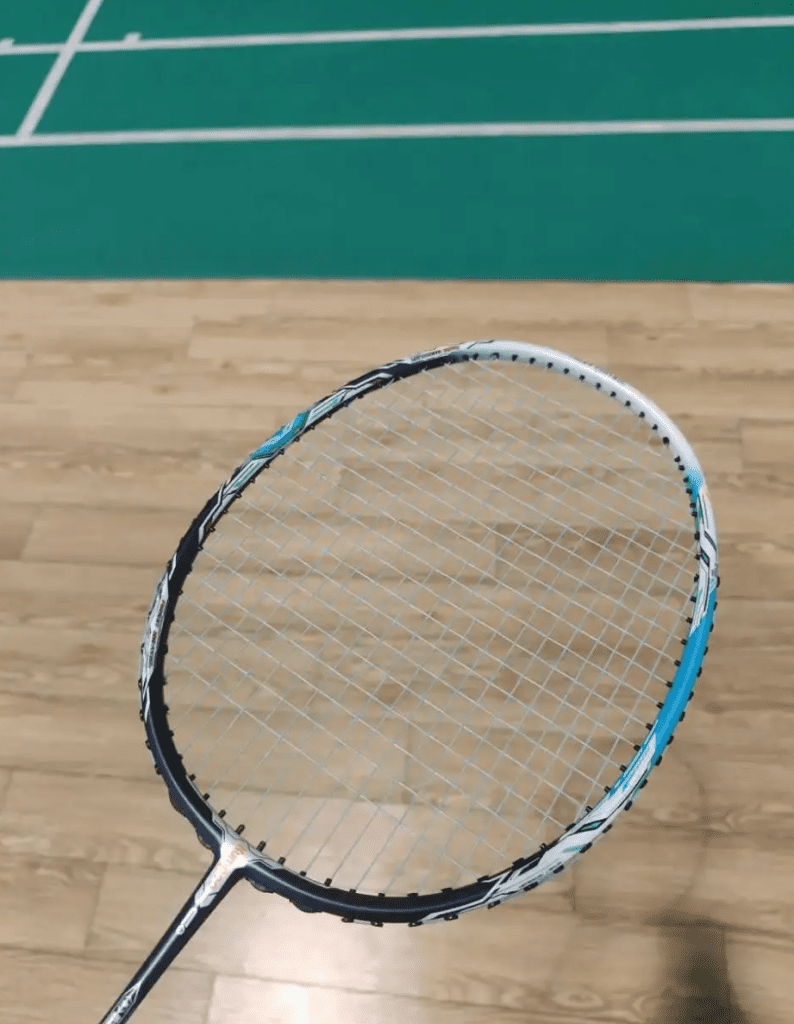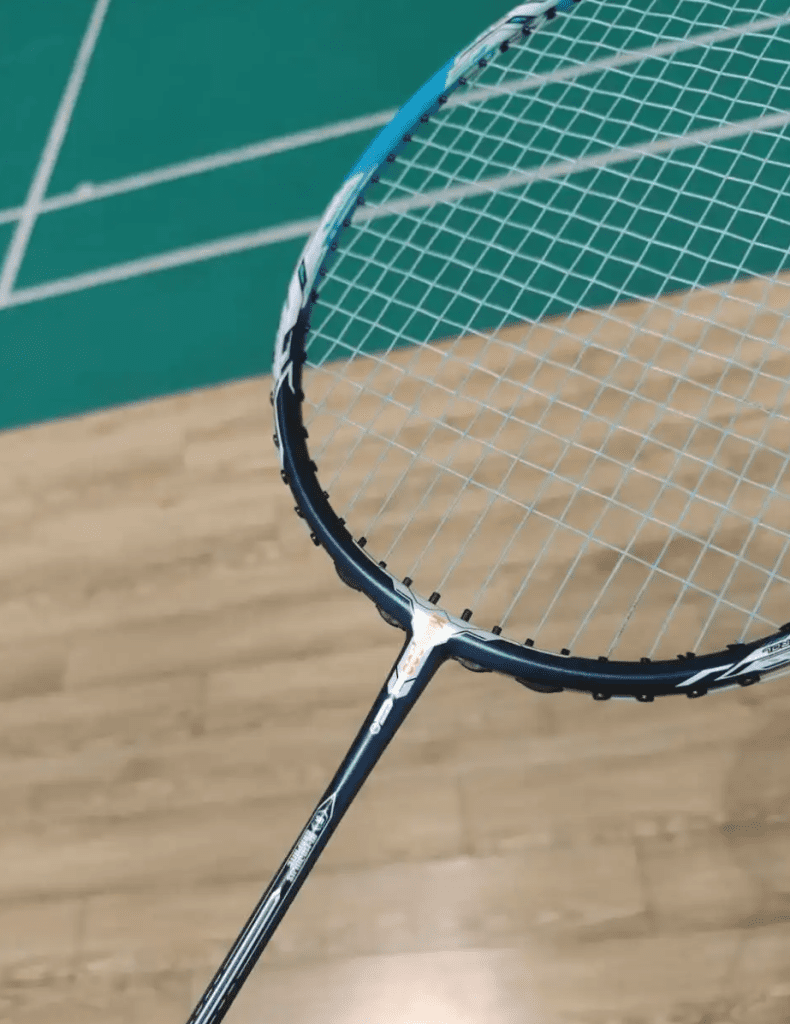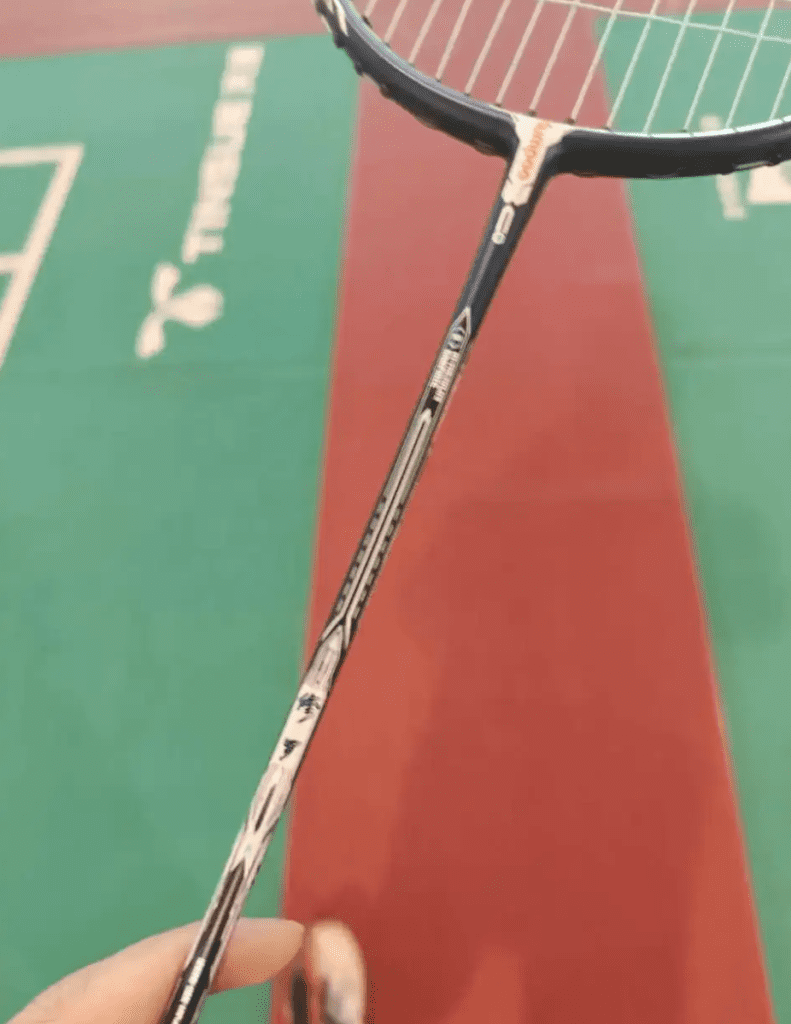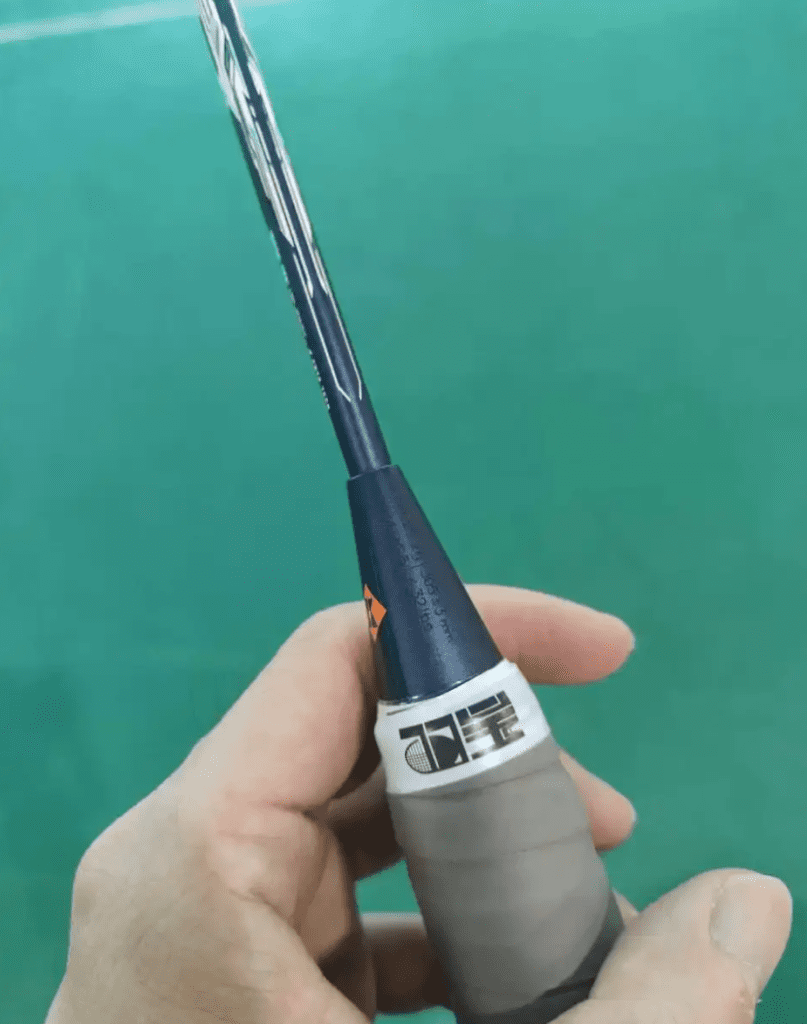After using several rackets from different manufacturers, including some unreleased prototypes, Kumpoo’s “Asura” left a particularly strong impression.
Initially, I didn’t find this racket exceptionally outstanding, but as I used it more, my assessment of it gradually stabilized. That said, even after its performance stabilized, it still didn’t quite live up to the score it holds in the Central Badminton Equipment Database.

Specifications: 4UG5, with grip tape, total weight in playing condition is 92.27g, balance point at 305mm, shaft length 220mm, medium stiffness, box frame, 76-hole string bed, 9-3 o’clock grooves, tension warranty up to 30 lbs, strung at 26 lbs with BN69 strings.
My understanding of “Asura” is that it refers to a being close to a demon, exuding a fierce expression and possessing cruel strength. However, the Kumpoo Asura doesn’t quite deliver that sense of oppression. The frame features an asymmetric design with a color scheme mainly in white, black, and blue. The racket uses plenty of decorative elements and stickers, yet they don’t create a chaotic look. The rich visual details make me think it’s a racket worth noticing, but in terms of aggression, it falls short of my expectations.

The official weight of the racket is 82g, which is very close to the boundary of an ultra-light racket. So for a racket with such a high balance point, it feels somewhat similar to an ultra-light racket. The racket’s weight is moderate, but it has a noticeable head-heavy feel, which helps generate power when handling attacking shots. The shaft’s medium stiffness makes it easy to find the right driving force, allowing you to harness the elasticity of the material in quick, sharp movements.
However, in my view, the Asura’s elasticity does not surpass the performance seen in previous Kumpoo flagship rackets. The shaft, which is advertised as being extremely thin at 6.1mm, performs only moderately well. In other words, I would lean toward describing the Asura as a “sugar water” racket—a racket that is easy to use and forgiving, without extreme characteristics.

Given this, the best approach when using the Asura is to focus on its elasticity. It’s easy to notice that the Asura is quite agile during drive exchanges, with a responsive feel that allows for sustained rallies in fast-paced midcourt exchanges. When you have the opportunity to attack from the backcourt, it’s better to use sharp, quick power shots to apply pressure rather than relying too much on full-body core strength to execute a heavy smash for a decisive point. The Asura’s mass isn’t high enough for one-shot kill situations; to achieve a finishing blow from the backcourt, it would require the opponent to be in a poorly formed defensive position.

That said, it can be a bit unstable. When handling net shots, I didn’t feel a particularly stable touch with the Asura. In this regard, the Provincial Team Edition 2300 is still quite good. In contrast, when dealing with shots just above the net, the Asura’s various return shots felt okay, showing high flexibility and a good margin for error.
Additionally, the shaft’s elasticity does indeed show some improvement. This allows me to handle defensive situations better when using the Asura. Whether it’s a quick recovery shot after being forced into a backhand position or hitting from a low position in the backhand corner, the shaft’s elasticity helps deliver decent transitional shots, and even clear the pressure.

And that’s where its charm lies: although it’s not known for swing speed, nor is it marketed as a power-oriented racket, it performs excellently in fast, continuous rallies. In other words, it’s better suited for doubles play.

Leave a Reply